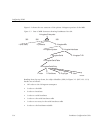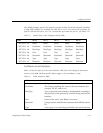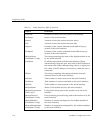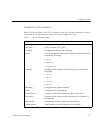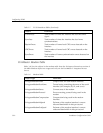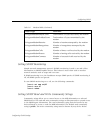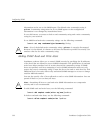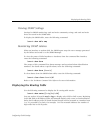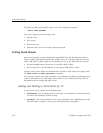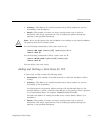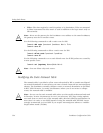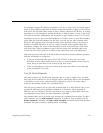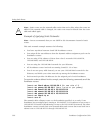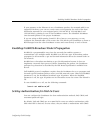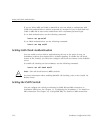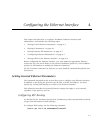
Setting Static Routes
3-24 PortMaster Configuration Guide
To display the IPX routing table entries, enter the following command:
Command> show ipxroutes
The routes appear in the following order:
1. Default route
2. Host routes
3. Network routes
4. Expired routes that are no longer being advertised
Setting Static Routes
Static routes provide routing information unavailable from the Routing Information
Protocol (RIP), Open Shortest Path First (OSPF) protocol, or Border Gateway Protocol
(BGP). RIP, OSPF, or BGP might not be running for one of the following two reasons.
• Network administrators choose not to run RIP, OSPF, or BGP.
• Hosts connected to the PortMaster do not support RIP, OSPF, or BGP.
Separate static routes tables are maintained for IP and for IPX, which you display with
the show routes and show ipxroutes commands.
You construct a static route table manually on a PortMaster by adding and deleting static
routes as described in the following sections. Refer to the
PortMaster Routing Guide
for
information about routing and static routes.
Adding and Deleting a Static Route for IP
A static route for IP contains the following items:
• Destination—The IP address prefix of the host or the number of the IPX network
to which the PortMaster will be routing.
• Netmask —The static netmask in use at the destination. See “Modifying the Static
Netmask Table” on page 3-26 for more information about netmasks.



